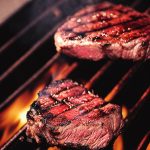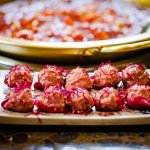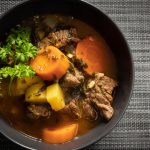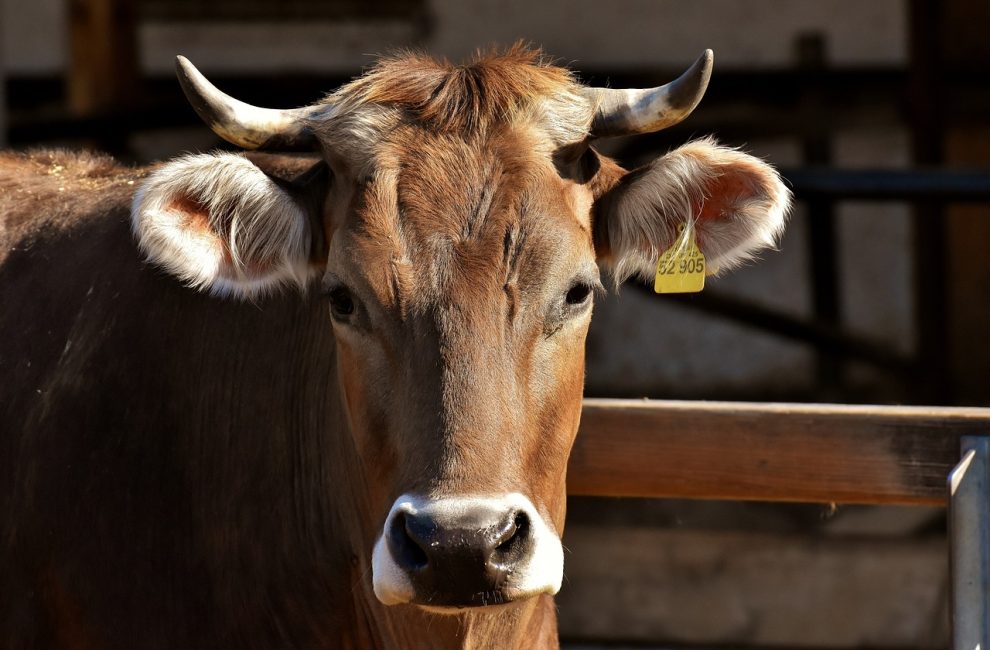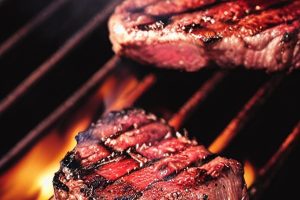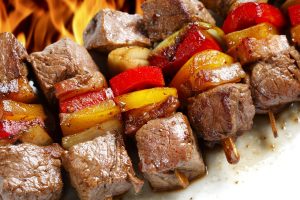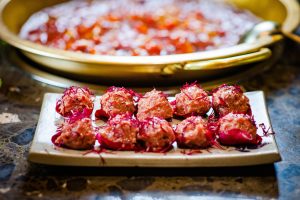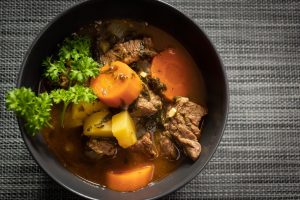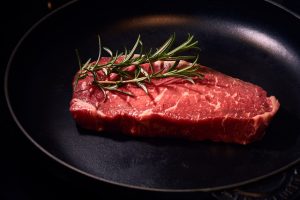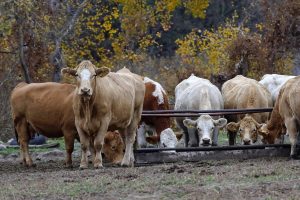Moo Shu Beef is a popular dish in Chinese cuisine that is beloved for its flavorful beef stir-fry and unique pancake wrapping. This dish has a rich history that dates back to ancient China, where it was enjoyed by emperors and nobility. In this article, we will explore the origins of Moo Shu Beef and delve into the tradition of wrapping it in delicate pancakes. Join us on a journey through the culinary heritage of this delicious and iconic dish.
Table of Contents
- Uncovering the History of Moo Shu Beef: From Ancient China to Modern America
- The Evolution of Moo Shu Beef: How a Traditional Chinese Dish Became a Western Favorite
- Going Beyond the Pancake: The Cultural Significance of Moo Shu Beef Wrapping
- From Dynasty to Dinner Table: Tracing the Origins of Moo Shu Beef
- The Art of Moo Shu Beef: A Delicious Blend of Flavors and Traditions
Uncovering the History of Moo Shu Beef: From Ancient China to Modern America
Moo Shu Beef is a popular dish in Chinese cuisine that has made its way to menus in Chinese restaurants across America. This dish has a rich history that dates back to ancient China, where it was first created. The origins of Moo Shu Beef can be traced back to the northern regions of China, where it was traditionally made with thinly sliced beef, mushrooms, cabbage, and scrambled eggs, all stir-fried together in a flavorful sauce.
The name “Moo Shu” comes from the Mandarin word for plum, which was traditionally used in the sauce for this dish. Over the years, the recipe has evolved to include a variety of ingredients such as bamboo shoots, wood ear mushrooms, and sometimes even pork or chicken. The dish is traditionally served with thin pancakes made from flour and water, which are used to wrap up the filling like a burrito.
In modern America, Moo Shu Beef has become a popular choice on Chinese restaurant menus, often served with a side of hoisin sauce for dipping. While the dish may have undergone some changes to suit American tastes, its roots in ancient Chinese cuisine are still evident in its flavors and ingredients.
Overall, Moo Shu Beef is a dish that has stood the test of time, evolving from its origins in ancient China to become a beloved staple in Chinese-American cuisine. Its rich history and delicious flavors continue to make it a favorite among diners of all ages.
The Evolution of Moo Shu Beef: How a Traditional Chinese Dish Became a Western Favorite
Moo Shu Beef is a dish that has a long and storied history, originating in China and eventually making its way to Western countries where it has become a popular favorite. The evolution of Moo Shu Beef from a traditional Chinese dish to a Western favorite is a fascinating journey that highlights the cultural exchange and fusion of culinary traditions.
In traditional Chinese cuisine, Moo Shu Beef is a dish that features thinly sliced beef, mushrooms, cabbage, and other vegetables stir-fried together in a savory sauce, typically served with pancakes or steamed buns for wrapping. This dish has been enjoyed in China for centuries, with each region putting its own unique spin on the recipe.
The popularity of Moo Shu Beef in Western countries can be traced back to the early 20th century when Chinese immigrants began opening restaurants and introducing their traditional dishes to a new audience. As Chinese cuisine gained popularity in the West, dishes like Moo Shu Beef started to appear on menus in Chinese restaurants across the United States and Europe.
Over time, Moo Shu Beef began to undergo some changes to suit Western tastes and preferences. While the core ingredients and flavors remained true to the traditional recipe, Western adaptations often include the addition of ingredients like carrots, bell peppers, and bamboo shoots to add color and texture to the dish. Additionally, some Western versions of Moo Shu Beef use flour tortillas or lettuce wraps instead of traditional pancakes or buns for a lighter and healthier twist.
The evolution of Moo Shu Beef from a traditional Chinese dish to a Western favorite is a testament to the power of cultural exchange and the adaptability of cuisine. By blending traditional flavors with modern ingredients and techniques, chefs have created a dish that appeals to a wide range of palates and has become a beloved staple in many Western households.
In conclusion, the evolution of Moo Shu Beef is a fascinating example of how a traditional Chinese dish can be adapted and embraced by Western cultures. Whether enjoyed in its traditional form or with a Western twist, Moo Shu Beef continues to be a delicious and satisfying dish that bridges the gap between culinary traditions.
Going Beyond the Pancake: The Cultural Significance of Moo Shu Beef Wrapping
Moo Shu Beef is a popular Chinese dish that goes beyond just being a tasty meal. It holds a significant cultural importance in Chinese cuisine and dining etiquette.
The act of wrapping Moo Shu Beef in a thin pancake is not just a way to enjoy the dish, but it also reflects the traditional Chinese value of balance and harmony. In Chinese culture, balance is considered essential in all aspects of life, including food. Wrapping Moo Shu Beef in a pancake allows for a perfect balance of flavors and textures, creating a harmonious dining experience.
Furthermore, Moo Shu Beef wrapping also plays a role in Chinese dining etiquette. In Chinese culture, sharing food is a common practice and signifies unity and togetherness. When dining with others, the act of wrapping Moo Shu Beef and sharing it with fellow diners fosters a sense of community and connection.
Additionally, the ingredients used in Moo Shu Beef hold cultural significance as well. The use of vegetables such as cabbage, mushrooms, and bamboo shoots not only add flavor and nutrition to the dish but also represent the importance of fresh, seasonal produce in Chinese cooking.
In conclusion, Moo Shu Beef wrapping goes beyond just being a delicious meal. It reflects traditional Chinese values of balance and harmony, plays a role in dining etiquette, and showcases the cultural significance of ingredients used in Chinese cuisine. So next time you enjoy a plate of Moo Shu Beef, remember the cultural richness and significance behind this simple yet meaningful dish.
From Dynasty to Dinner Table: Tracing the Origins of Moo Shu Beef
Moo Shu Beef is a popular dish in Chinese cuisine that has made its way onto dinner tables around the world. But where did this delicious and savory dish originate? To understand the origins of Moo Shu Beef, we must first delve into the history of Chinese cuisine.
Chinese cuisine has a rich and diverse history that dates back thousands of years. The cuisine has been influenced by various dynasties, regions, and cultural practices throughout the centuries. One of the key influences on Chinese cuisine was the Ming Dynasty, which ruled China from 1368 to
- During this time, the imperial court placed a strong emphasis on culinary arts, leading to the development of many new and innovative dishes.
One of the dishes that emerged during the Ming Dynasty was Moo Shu Beef. Moo Shu Beef is a stir-fried dish that typically features thinly sliced beef, mushrooms, cabbage, and other vegetables, all cooked in a flavorful sauce. The dish is traditionally served with thin pancakes, hoisin sauce, and sometimes scrambled eggs.
The name “Moo Shu” is believed to come from the Mandarin word “móshū,” which means “wood shavings.” This name likely refers to the thin slices of beef used in the dish, which resemble wood shavings in appearance.
Over time, Moo Shu Beef became popular not only in the imperial court but also among the common people. As Chinese cuisine spread to other parts of the world, Moo Shu Beef became a staple in Chinese restaurants worldwide. Today, it is a beloved dish that can be found on many Chinese restaurant menus.
In conclusion, Moo Shu Beef has a long and storied history that traces its origins back to the Ming Dynasty in China. This dish has evolved over the centuries to become a favorite on dinner tables around the globe. Its delicious flavors and cultural significance continue to make Moo Shu Beef a beloved part of Chinese cuisine.
The Art of Moo Shu Beef: A Delicious Blend of Flavors and Traditions
Moo Shu Beef is a classic Chinese dish that combines tender slices of beef with a medley of vegetables, all wrapped in a thin pancake and served with a savory hoisin sauce. This dish is a perfect example of the art of blending flavors and traditions to create a truly delicious and satisfying meal.
The key to a successful Moo Shu Beef lies in the careful preparation of each component. The beef should be thinly sliced and marinated in a mixture of soy sauce, rice wine, and ginger to infuse it with flavor and tenderness. The vegetables, typically cabbage, carrots, and mushrooms, should be stir-fried until they are just tender, but still retain their crispness.
The pancakes used to wrap the Moo Shu Beef are made from a simple mixture of flour, water, and a touch of oil. They are rolled out into thin circles and cooked briefly in a hot pan until they are slightly browned and pliable. The hoisin sauce, a thick and rich condiment made from soybeans, sugar, and spices, adds a sweet and tangy flavor that perfectly complements the savory beef and vegetables.
When it comes time to assemble the Moo Shu Beef, each component is carefully layered onto a pancake, rolled up, and enjoyed with gusto. The combination of flavors and textures – the tender beef, the crunchy vegetables, and the sweet and savory sauce – create a harmonious and satisfying meal that is sure to please even the most discerning palate.
In conclusion, Moo Shu Beef is a dish that exemplifies the art of blending flavors and traditions to create a truly delicious and memorable dining experience. Whether enjoyed at a traditional Chinese restaurant or prepared at home, this classic dish is sure to delight and impress all who sample its flavorful delights.
In conclusion, the origins of Moo Shu Beef and its pancake wrapping tradition are deeply rooted in Chinese culinary history. From its humble beginnings in northern China to its evolution into a popular dish in Chinese-American cuisine, Moo Shu Beef has stood the test of time and continues to be enjoyed by many around the world. The delicate balance of flavors and textures in this dish, combined with the artistry of wrapping the ingredients in thin pancakes, makes Moo Shu Beef a truly unique and delicious culinary experience. Whether enjoyed at a traditional Chinese restaurant or homemade in the comfort of one’s own kitchen, Moo Shu Beef is a dish that brings people together and celebrates the rich cultural heritage of Chinese cuisine.
